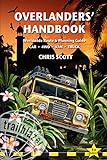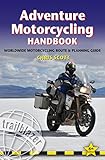Overland Uruguay Travel
Pan American Highway > Uruguay
Currency to display:
Contents
- 1 Visiting Uruguay
- 2 Entering Uruguay with a Car or Motorbike
- 3 Driving in Uruguay
- 4 Gas price in Uruguay and Diesel price in Uruguay
- 5 Safety and Security Considerations
- 6 Camping in Uruguay
- 7 Navigation
- 8 Special Overland Travel interests
- 9 Vehicle Maintenance
- 10 Buy or sell a car or motorbike in Uruguay
- 11 References
- 12 Helpful External links
Visiting Uruguay[edit]
Give a brief overview of what it's like to visit. How easy is the border, how safe is the country, are there great things to see and do, etc.
Entering Uruguay with a Car or Motorbike[edit]
Correct as of: December 2013
Required Paperwork[edit]
(To check if you need a travel Visa for Uruguay, application instructions and fees see: Uruguay Visa online application at VisaHQ.com)
Vehicle registration a matching passport are required.
Process at border[edit]
- The owner of the vehicle gains entry at immigration (migración), including a stamp in their Passport.
- The owner must show the new passport stamp, drivers license the original vehicle registration to customs (aduana)
- The owner is issued a temporary import permit for the vehicle.
If you ship into Uruguay, you'll want to read this excellent blog post from June 2014 that describes in excellent details the steps you need to follow to retrieve your vehicle when it arrives: Getting a vehicle through customs and out of port in Montevideo, Uruguay - Dare2Go
Cost of entry[edit]
Free.
Permitted length of stay[edit]
12 months.
Extension of stay[edit]
If you need more time on your permit, the Administracion Nacional de Aduanas is at the port of Montevideo, near the BuqueBus terminal. GPS: -34.904881,-56.211773. Tourists are issued a 90 visa which is renewable at any department capital pretty easily. The fine for overstaying a visa is $20.00 USD
Storing a vehicle and temporarily leaving the country[edit]
UPDATE OCTOBER 2017: Uruguay Vehicle Confiscations
Reported recently that several places in Uruguay that had been offering long term vehicle storage for many years have been raided by Aduana and all foreign vehicles on the premises have been Customs-sealed pending a court case later this month.
Reasons are not clear but current explanation seems to be that entrance under a TVIP is conditional on the vehicle being used for tourism purposes and once the signatory to the TVIP has left the country, the vehicle is obviously not being used for tourism.
The period of validity of the TVIP - normally 12 months in Uruguay, but can be 3 months if arriving by ship - is not the issue as at at one storage place, all TVIPs were available for inspection by customs but that made no difference and no vehicles are to leave the yard until the matter is determined by the judge. Once the vehicle is not in the direct control of the signatory, the argument goes that the TVIP becomes invalid.
BTW These sort of TVIP regulations are similar in many if not all countries that allow entry to vehicles under the provisions of the Vienna Convention on Road Traffic, but some countries have never enforced them while others enforce them to the point of showing vehicle entry on passports and not allowing tourists to fly out leaving the vehicle behind.
Just another example of the uncertainty we all have to put up with as part of the price of adventure.
As always, read and understand the fine print.
See fb OverlandingSouthAmerica for the ongoing discussion and links to the Aduana web site
The vehicle import permit is good for 12 months, so Uruguay is one of the best options for storing your vehicle. The Aduana does not stamp the vehicle into the owner's passport, which means they can easily leave the country while the vehicle is in storage (as long as the vehicle does not overstay the 12 month permit).
Checkout uy-storage.com for one option, it's around $1.50 USD per day.
Exiting with a vehicle[edit]
Describe the paperwork requirements and process at the border to exit.
BuqueBus ferry between Uruguay and Argentina[edit]
When purchasing tickets for the ferry between Uruguay and Argentina, often times it is cheaper to book through the Uruguayan website. As foreigners, you are not allowed to pay in Argentinian pesos. You must pay with credit card or in dollars/euros.
Driving in Uruguay[edit]
Recommended books for Overlanding in Uruguay[edit]
Travel insurance for Uruguay[edit]
World Nomads offer the most flexible Travel Insurance at the best prices for multi-country / multi-year trips. You can buy, extend and claim online, even after you've left home.
Vehicle insurance requirements[edit]
We were required to have auto insurance before we could exit the port in Colonia with our vehicle, after arriving on Buquebus from Buenos Aires. (May 2015)
Cost of vehicle insurance[edit]
In May 2015 we paid $31.00 USD for a 1 month policy for our 4Runner.
Where to purchase vehicle insurance[edit]
When arriving in Colonia via the Buquebus ferry from Buenos Aires, we able to quickly purchase insurance from Banco de Seguros del Estado (-34.47053, -57.84406). It is located 3 blocks from the port. We were allowed to leave our vehicle in the port and walk to the insurance office to purchase our policy. The office's business hours were listed as 12:00-17:00. We are unsure if it is open on weekends, but it seems unlikely.
Driving license[edit]
An International Driving Permit is recommended to complement your driver's license.
Driving side of road[edit]
Right.
Unknown if RHD vehicles can be driven in Uruguay.
Mandatory items in vehicle[edit]
State any mandatory items that must be carried in the vehicle. (i.e. safety triangle, first aid kit, fire extinguisher, etc.)
Roads[edit]
General Road quality[edit]
Highways along the edge of the country, especially along the south are all paved and generally good. Highways in the interior are well maintained gravel. In general Uruguay's got flat boring and well maintained roads.
Road signs[edit]
Road signs generally follow international standards. Within cities the street names are often poorly signed or only in small placards on the sides of buildings.
Toll roads[edit]
The highway from Colonia through Montevideo to the boarder with Brazil in Chuy has tolls where the road crosses department boundaries. The tolls are not expensive, $2.50 USD as of August 2013.
Bribery in Uruguay[edit]
Bribery is very uncommon in Uruguay.
Checkpoints[edit]
There is a network of check points for police. Although they are staffed drivers are not expected to stop unless they are flagged down.
Traveling with pets[edit]
List the entry requirements and anything else required to travel with a pet.
Gas price in Uruguay and Diesel price in Uruguay[edit]
Last updated: January 2014
Currency and unit to display:
| Gasoline Grade | Price |
|---|---|
| Unleaded | $U43.40 UYU per Liter[1] |
| Diesel | $U39.90 UYU per Liter[1] |
Gas and Diesel Availability / Frequency[edit]
All gas and diesel are at fixed prices across the whole country. Often it is more than 50km between gas stations and many towns do not have any gas station.
Gas and Diesel Quality[edit]
Gas and Diesel are of low quality. Diesel has a % of biodiesel mixed in. All fuel is refined by the state owned oil company in Montevideo.
Safety and Security Considerations[edit]
Driving at night[edit]
Uruguay is generally a very safe place to drive. There are traffic accidents and generally the roads are not as safe as Europe but it's more more relaxed and orderly than the rest of Latin America.
Vehicle parking[edit]
In the center of Montevideo during the day you must pay for parking by registering the location and license plate. You can do this at kiosks but locals do it by sending a text message from their phone. Do not leave vehicles on the street in the old city or city center over night. Locals use garages except in the wealthiest neighborhoods where there are private security watching the street.
The city has a licensed system of parking monitors who are paid a few pesos to watch cars on each block and help you park. They keep cars safe but don't work at night. This is only for vehicles with Uruguayan plate. With a foreign plate you don't have to pay, its free!
For long term parking until 12 month there are some providers in Uruguay. The only provider with garage and indoor parking is UY-Storage
Special driving considerations[edit]
A List of special things to be careful of (i.e. Unsigned speed bumps, abnormal road rules, people or animals on the road, etc.).
List any roads that are not recommended to drive for safety or other security reasons.
Security advisories and information[edit]
- Country Specific Information - U.S. Department of State
- Travel Reports and Warnings - Foreign Affairs and International Trade Canada
- Travel advice by country - Foreign and Commonwealth office (U.K.)
- Travel Advice for Uruguay - Australian Department of Foreign Affairs and Trade
Camping in Uruguay[edit]
Describe if organized "pay" camping is common. List the facilities commonly found at these campsites.
List the approximate average price range of camping in organized campgrounds.
Also discuss the possibility of "wild" or "roadside" camping. How common is it? Is it considered safe, or a bad idea.
Camping guide books[edit]
There is an extensive network of both public and private camp grounds across Uruguay. It is not uncommon for RV's and campers to park along the beach and in beach towns. Punta del Diablo in particular has a small group of RV's parked along the beach downtown in the summers.
Drinking water[edit]
All tap water in Uruguay is safe to drink.
[edit]
Paper maps[edit]
Reise Know-How are amoung the best paper maps. Purchase paper maps before arriving in Uruguay
GPS Maps of Uruguay[edit]
GPS co-ordinates for camping, propane, gas, repairs, etc. in Uruguay[edit]
- iOverlander is a website and iPhone application designed by Overlanders, for Overlanders. It contains GPS co-ordinates and reviews for camping, hotels, propane, water, mechanics, borders and much more.
Propane tanks are available through out the country. Every town has repair garages. Everything goes through Montevideo. Parts and importing are expensive.
Special Overland Travel interests[edit]
If you can handle driving over sand dunes then Cabo Polonio is a real treat. Only accessible by big unimog trucks or 4v4's the town has no streets or grid power and is surrounded by dozens of sq km of sand dunes. Camping is allowed freely.
Vehicle Maintenance[edit]
http://www.uy-storage.com between Montevideo and Punta del Este, also for RVs
Dealers[edit]
4x4s / Trucks
- Toyota Global Dealer Locator
- Land Rover International Dealer Locator
- Mercedes Benz International (select country on bottom right)
- Jeep International site locator
Motorbikes
Local Garages[edit]
http://www.uy-storage.com between Montevideo and Punta del Este, also for RVs Workshop
Buy or sell a car or motorbike in Uruguay[edit]
Buy
Vehicles are very expensive in Uruguay, costing much more than in Argentina and Brazil.
Sell
It's virtually impossible to import used vehicles in to Uruguay as there are restrictions as to what type of cars or motorbikes may be imported into Uruguay. A-1 Auto Transport, Inc. has a good resource for information on the subject, including required documents and harmonization requirements.
References[edit]
Links to the source of any information - blogs or discussion forums, etc.
Helpful External links[edit]
Add any helpful external links here.
- Uruguay: Visa and Passport requirements | World Travel Guide
- Health Information for Travelers to Uruguay - Center for Disease Control and Prevention
- Uruguay travel guides at wikivoyage
- Uruguay - Wikipedia, the free encyclopedia










